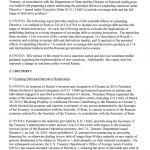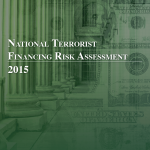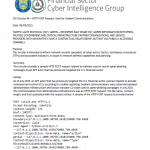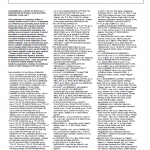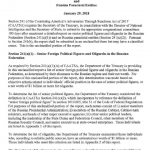
Section 241 of the Countering America’ s Adversaries Through Sanctions Act of 2017 (СААTSA) requires the Secretary of the Treasury, in consultation with the Director of National Intelligence and the Secretary of State, to submit to the appropriate congressional committees 180 days after enactment а detailed report оп senior political figures and oligarchs in the Russian Federation (Section 241 (a)(l)) and on Russian parastatal entities (Section 241 (а)(2)). Pursuant to Section 241(Ь), the report shall Ье submitted in an unclassified form but may have а classified annex. This is the unclassified portion of the report.

